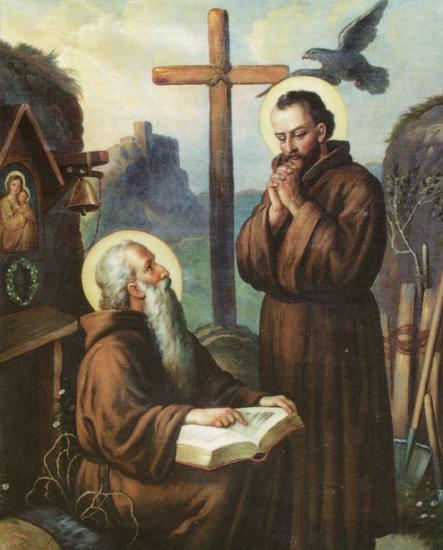Saint Andrew-Zorard and Benedict – Zobor
Fact of the Hungarian figure „St. Stephen and others – First christian saints in Hungarian Kingdom”
Part of the „The patrons and guardians of the land” topic
Zobor Hill, located in present-day Slovakia, holds a significant place in the early Christian history of Hungary, particularly through the lives of Saints Andrew-Zorard (Szent Zoerard-András) and Benedict (Szent Benedek). These two hermits, among the first saints of the Kingdom of Hungary, were canonized for their devout and ascetic lives, which left a lasting spiritual legacy in the region.
The first Hungarian legend about Zorard and Benedict was penned in the mid-1060s by Maurus, the Bishop of Pécs, taking the reader back to the reign of Saint Stephen. Zorard, originally a peasant of Polish origin, arrived at Mount Zobor, where he received monastic robes from Abbot Philip and took the name Andrew. The exact timing is debated, but it is believed to be during the first or second decade of the 11th century. Andrew-Zorard embraced a life of extreme asceticism, retiring to a hermitage, fasting rigorously, and physically torturing himself while engaging in hard labor daily.
Following Andrew-Zorard’s death, his disciple Benedict continued this strict way of life. Benedict’s martyrdom occurred when he was killed by bandits. His body, thrown into the Váh River, remained unfound for a year until an eagle miraculously led people to it. When recovered, his body was discovered to be intact, further enhancing his veneration.
Even before the mid-1060s, Zorard had already developed a local cult, known for miracles such as bringing two men back to life who were thought dead. The significance of their lives culminated in 1083, a pivotal year in Hungarian Christianity when, on 16 and 17 July, Andrew-Zorard and Benedict were canonized in Nitra. Andrew-Zorard was recognized for his religious merits, while Benedict was honored for his martyrdom.
Their cult, initially strong in the Nitra region, also spread south and southwest into Poland, reflecting the deep spiritual impact these early saints had on both Hungary and the broader region. Their veneration highlights the role of monasticism and hermitic life in the spiritual foundation of Hungary, alongside the royal efforts to consolidate the Christian church within the kingdom.





